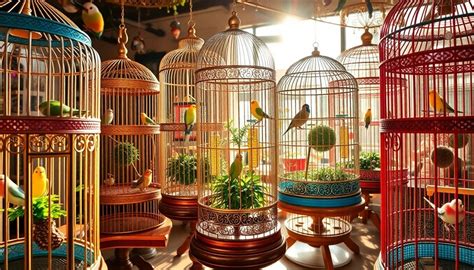Introduction
Birds are highly social animals that require adequate socialization to thrive. Neglecting this crucial aspect of their well-being can lead to behavioral problems, stress, and even health issues. This article offers a comprehensive guide to pet socialization for birds, exploring its importance, benefits, and effective strategies.

Importance of Socialization
Socialization is the process of exposing a bird to different experiences, people, and animals in a controlled and positive environment. By providing opportunities for interaction, socialization helps birds:
- Develop proper social skills and communication
- Reduce fear and anxiety
- Prevent aggression and feather plucking
- Enhance their overall well-being
Benefits of Socialization
Numerous studies have demonstrated the significant benefits of socialization for birds, including:
- Improved cognitive function: Socialized birds have enhanced problem-solving skills, memory, and learning abilities.
- Reduced stress: Socialization helps birds cope with stressful situations and promotes calmness.
- Increased longevity: Socialized birds tend to live longer and healthier lives due to reduced stress and improved overall well-being.
Effective Socialization Strategies
Effective socialization requires a gradual and consistent approach that meets the individual needs of the bird. Here are some proven strategies:
- Start early: Begin socialization at a young age, when birds are most receptive to learning.
- Introduce gradually: Start with brief and positive interactions with new people, animals, and environments.
- Respect their boundaries: Allow birds to approach and interact at their own pace, without forcing them.
- Offer positive reinforcement: Reward birds for positive behaviors during socialization, such as calm exploration and interaction.
Tips and Tricks
- Keep socialization sessions short and enjoyable.
- Use high-value treats as rewards during training.
- Provide a safe and comfortable environment for socialization.
- Avoid overwhelming birds with too many new experiences at once.
Why Socialization Matters
Without proper socialization, birds may develop behavioral problems such as fear, aggression, and obsessive feather plucking. These issues can seriously compromise their well-being and quality of life.
Benefits of Socialization for Parrots
Parrots are highly intelligent and social birds that benefit greatly from socialization. By providing them with opportunities to interact with other parrots, people, and different environments, owners can help them:
- Develop strong social bonds
- Learn vocalizations and tricks
- Enhance their cognitive abilities
- Reduce aggression and destructive behaviors
Case Detail:
A study published in the journal “Animal Behavior” found that parrots that were socialized with other birds showed reduced levels of aggression and improved overall well-being compared to non-socialized parrots.
Socialization for Budgies vs. Cockatiels
Budgies and cockatiels are two popular pet bird species with different socialization needs.
- Budgies are highly social and thrive in large flocks. They require regular interaction with other budgies to maintain their well-being.
- Cockatiels, on the other hand, are more independent and less demanding of socialization. They can be content with limited interaction, but still benefit from occasional companionship.
Table 1: Socialization Needs of Budgies vs. Cockatiels
| Feature | Budgies | Cockatiels |
|---|---|---|
| Socialization requirements | High | Moderate |
| Flock size | Large | Small or single |
| Frequency of interaction | Daily | Weekly or monthly |
Socialization for Birds of Prey
Birds of prey, such as hawks and owls, require specialized socialization techniques due to their unique predatory instincts.
- Start socialization at a young age, preferably before they develop strong hunting drives.
- Introduce prey animals gradually, under controlled conditions.
- Provide opportunities for interaction with other birds of prey in a non-aggressive setting.
Table 2: Socialization Strategies for Birds of Prey
| Strategy | Description |
|---|---|
| Imprinting | Establishing a strong bond with the handler as a surrogate parent |
| Gradual exposure | Introducing prey animals at increasing distances and levels of difficulty |
| Controlled interactions | Allowing birds to interact with other birds of prey in a safe and supervised environment |
Socialization for Waterfowl
Waterfowl, such as ducks and geese, have unique socialization needs related to their aquatic habitat.
- Provide access to a large body of water where they can swim and interact with other waterfowl.
- Introduce new birds gradually, allowing them to establish their own social hierarchy.
- Avoid overcrowding enclosures, as this can lead to aggression and stress.
Table 3: Socialization Strategies for Waterfowl
| Strategy | Description |
|---|---|
| Natural habitat | Providing a large pond or lake for swimming and interaction |
| Gradual introduction | Adding new birds to the flock over time, allowing them to establish dominance |
| Space management | Avoiding overcrowding by providing adequate space per bird |
Conclusion
Pet socialization for birds is essential for their well-being, development, and happiness. By following the strategies outlined in this article, owners can provide their feathered companions with the opportunities they need to thrive. Socialized birds enjoy better cognitive function, reduced stress, longer lifespans, and stronger social bonds. Invest in your bird’s socialization and reap the rewards of a happy, healthy, and well-adjusted companion for years to come.





















